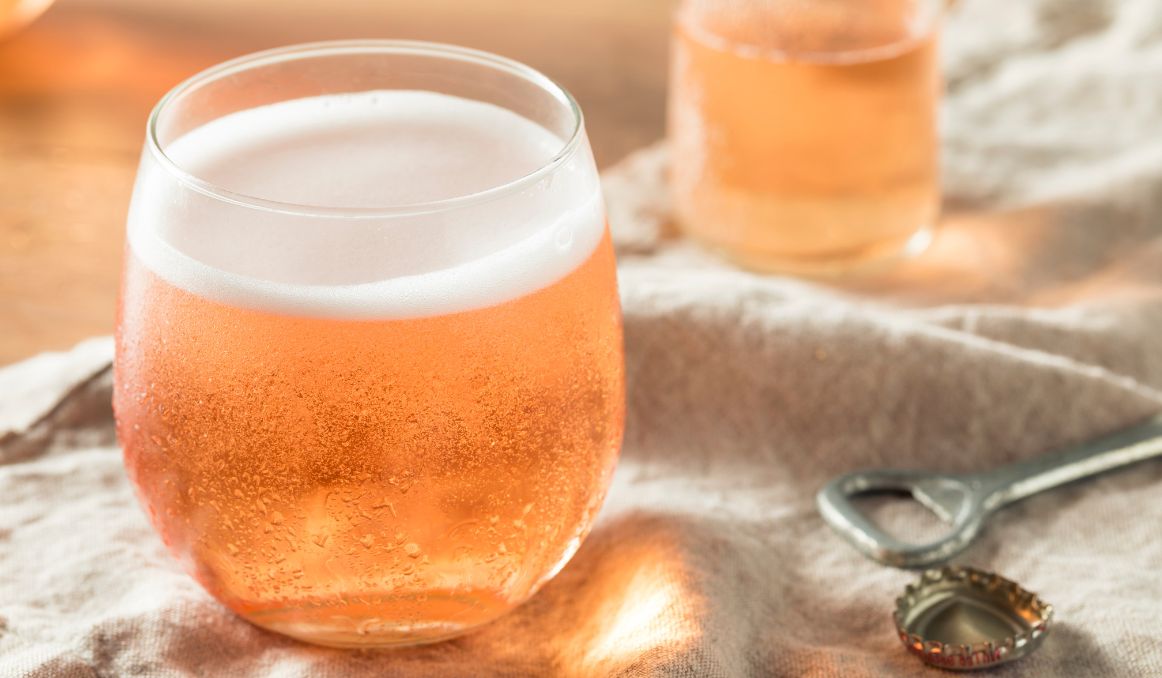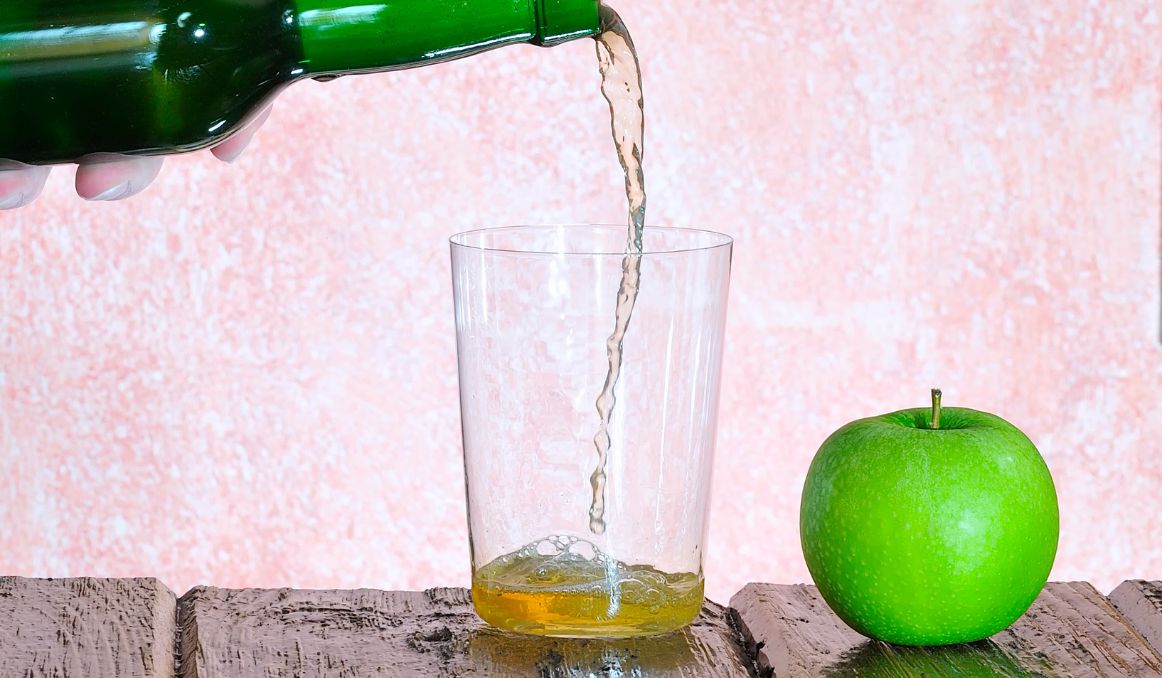Clarifying Cider After Fermentation: The Options
There is no time like winter and the holidays for a nice mulled spiced cider, with or without alcohol. But really, cider is a great beverage all year round, and thanks to various methods for aging and preservation, cider makers can harvest fall fruit and prepare cider that can be drunk in any season.
But the question comes up when fermenting a hard cider about clarifying cider after fermentation. How do you do it? And is it even necessary?
What Is Cider?

It is interesting that cider is differentiated from wine in that cider is an alcoholic beverage made from fruit, and so is wine.
In fact, in most countries, cider is defined as a wine for tax purposes.
And then there is the issue of fruit wine, which seems a bit redundant. After all, wine is made with fruit.
In the end, wine is defined as an alcoholic beverage made from the juice of grapes, cider is an alcoholic beverage made from the juice of apples or pears, and fruit wine is an alcoholic beverage made from any other fruit, usually berries.
Historically, cider has been around for at least as long as wine and much longer than beer.
It requires no stretch of the imagination to see how apple juice or pear juice, once pressed and left out, could have attracted local yeasts and fermented, only for the juice maker to discover they now had a slightly alcoholic drink to celebrate the fall harvest with.
How to Make Cider
And that is indeed how simple it is to make cider.
Without alcohol, cider is typically a mulled beverage that includes several spices.
Traditionally, apples or pears are pressed for their juice, and the juice is then boiled with oranges, cinnamon sticks, cloves, and even sugar.
Why?
Well, apples were not for eating for several thousands of years.
They were too hard and too bitter, certainly not the Red Delicious or Honey Crisp we are used to today.
Thus, the fruit would be harvested, picked, pressed into juice, boiled, and then sweetened and spiced to be improved upon.
It is no great leap then from there to hard cider.
How to Make Hard Cider
The only step missing between classic mulled cider and hard cider is fermentation, and really, all that is required is to leave the cider out to the elements. Natural, wild, local yeast will be attracted to the sugars in the cider and get to fermenting right away.
Now, after boiling, fermenting adds yet another protective element for drinking all year long as alcohol acts as both an antitoxin and a preservative.
You can trust that the good yeast causing alcoholic fermentation is also going to clean up any bad yeast and bad bacteria that may also be competing for attention. Yeast that provides alcholic fermentation, along with good bacteria that provides lactic acid fermentation, will always win out over bad yeast or bad bacteria that could cause harm.
Humans discovered this phenomenon millennia ago, even if they didn’t quite understand it yet, and have relied on ciders, ales, and wines as a result.
To make hard cider then, you can choose your fruit, typically apples or pears, press them for juice, add any spices you like – cinnamon, cloves, and even a bit of sugar if you want to increase your alcohol content – and bring everything to a roiling boil.
As the liquid cools down, yeast in your environment will be naturally attracted to the sugars now rich in your juice.
You can either place your cider in an airtight container, adding your own yeast, or you can leave your cider in the fermentation vessel, a jar or large container, with a cheesecloth or otherwise loosely fitting lid to keep out debris or sediment from getting in.
After about a week, you can expect that fermentation has taken place.
You can even watch it take place yourself, the bubbling and roiling, fizzing and frothing will peak after several days and then die down.
Once all is calm, you will have hard cider.
What Is the Haze in Cider?

And yes, there will be haze.
Just like with ale, cider will have residual cloudiness and suspended solids in the liquid.
These solids can be many things – yeast, proteins from the yeast, and even debris from the juice itself, like apple or pear bits.
The most important thing to note is that none of this sediment is harmful and in fact studies have shown these solids to be highly beneficial for human consumption. The solids in cider that present this cloudiness are packed with polyphenols, which provide numerous nutrients beneficial to humans, including antioxidants.
Antioxidants protect us from free radicals in the environment and help us stay healthy in a world filled with toxins.
Getting rid of these solids is a bit like only drinking the juice rather than eating the whole apple.
Clarifying Cider after Fermentation
But, if you absolutely insist on clear cider, the best way to clarify your cider after fermentation is to cold shock your cider.
Simply move your beverage into a cold storage unit, like a refrigerator, and allow all the solids to drop to the bottom of the vessel. Depending on your yeast, the yeast may flocculate at the top.
You can then skim the clumped yeast from the top and strain the solids from the bottom, pouring into another vessel.
This is a form of racking your cider.
After the first racking, you can allow any remaining yeast to smooth out flavors at room temperature for another couple of weeks, and then rack it again, creating an even more clarified cider.
Of course, you can also add enzymes like gelatin, which will clean up most of the cloudiness for you, but, again, you’ll also be ridding your cider of a lot of nutrition.
Cheers!
Passionate about the fermentation process? So are we! If you’re interested in finding out how you can use our technology to control fermentation and monitor your yeast, save work hours and improve the cost-efficiency of your business, drop us a line at [email protected] or check out our product pages:
- Oculyze BB 2.0 (Better Brewing) Yeast Cell Counter App + Hardware
- Oculyze FW (Fermentation Wine) Yeast Cell Counter App + Hardware
Also, you can now get access to a fully functional demo account to test your yeast via our Web App. Completely free of charge and with no commitment to purchase.


